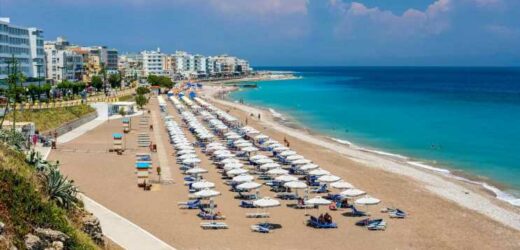MYKONOS, Santorini and Rhodes have been added to the EU's "dark red" zone – meaning all travel is advised against.
The Greek islands were issued the new warning by the European Centre for Disease Prevention and Control's COVID-19 map on Thursday after a rise in infections.
Greece is reporting 2,666 new infections on average each day, according to Reuters, having jumped from lows of 365 per day last month.
The cluster of 13 islands includes Greece's most popular destinations for foreign tourists, with Brits already heading to Rhodes and Santorini in recent weeks.
Greece is currently welcoming Brits to the country with just a negative test, or proof of vaccination.
However, the islands are enforcing stricter Covid measures which had led to more police deployed to the popular Greek islands due to fears of tourists ignoring them.
Greek Deputy Civil Protection Minister Nikos Hardalias said that both Mykonos and Ios, another popular tourist destination, were "one step" away from authorities imposing restrictions.
He said the situation was also worrying on the islands of Zante, Tinos, Lefkada, Santorini, Paros and Rhodes.
Greece prioritized their islands for the vaccinations, and heavily promoted their "COVID-free" status to draw visitors back this summer.
Despite tourists slowly returning, the islands are yet to see the same tourist numbers, with Germany listing Greece as a coronavirus risk area and the UK yet to move the country from the amber list to the green list.
🔵 Read our coronavirus live blog for the latest updates
Manolis Markopoulos, president of the hoteliers association of Rhodes, said in relation to the decision made by the ECDC: "We're waiting to see how the (tourist) markets will react."
The dark red zones on the ECDC map help distinguish very high-risk areas and also help EU member states uphold rules requiring testing on departure and quarantine upon return.
Last week the ECDC downgraded Crete, Greece's biggest island and another popular destination, to the dark red zone.
Source: Read Full Article




